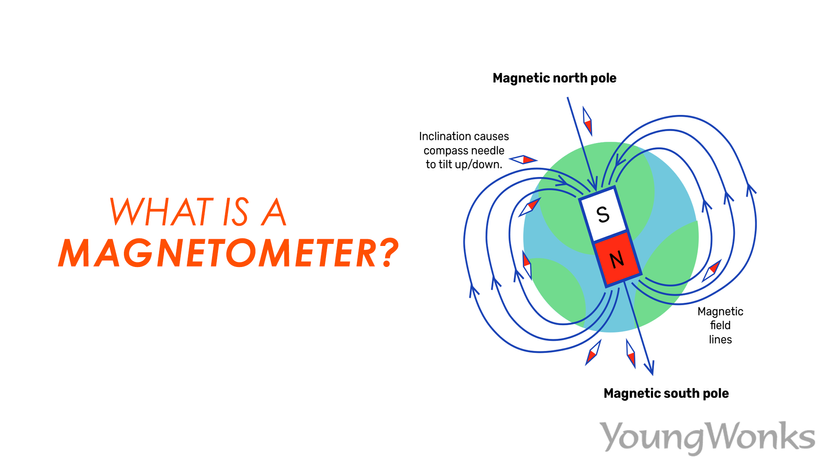Feb 16, 2021 By Team YoungWonks *
What is a magnetometer? How does a magnetometer work? What are the applications of a magnetometer? In this blog, we shall take a look at how they work and where they are used today.
What is a Magnetometer?

A magnetometer is a device used to measure the magnetic field, particularly with respect to its magnetic strength and orientation. A popular example of a magnetometer would be the compass, which is used to measure the direction of an ambient magnetic field (i.e. in this case, the earth’s magnetic field). Other magnetometers measure magnetic dipole moments; a magnetic dipole is the limit of either a closed loop of electric current or a pair of poles, since the size of the source is reduced to zero while keeping the magnetic moment - the magnetic field’s magnetic strength and orientation - constant. Think of the ferromagnet, a type of magnetic material that is used to record the effect of this magnetic dipole on the induced current in a coil.
How does a Magnetometer Work?
A magnetometer can work in different ways. Take for instance, a compass. Now we know that the compass’s needle aligns itself with the north of the earth’s magnetic field when it’s at rest. In other words, the sum of the forces acting upon it is zero and the weight of the compass’s own gravity cancels out the earth’s magnetic force acting upon it. This simple example explains how this property of magnetism lets other magnetometers work. Electronic compasses can similarly help indicate which direction is the magnetic north using phenomena such as the Hall effect, magneto induction, or magnetoresistance.
Let us now try to understand the physics behind how a magnetometer works.
Magnetometers using the Hall effect:
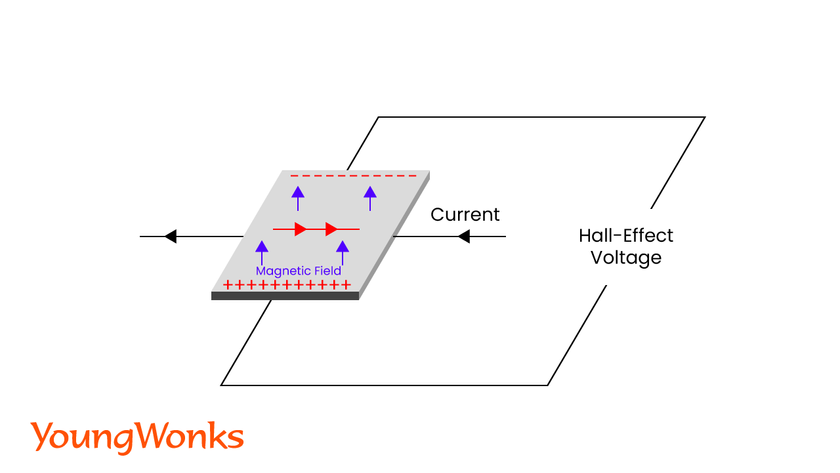
One of the methods used by magnetometers relies on what is known as the Hall effect. What is the Hall effect? To put it simply, the Hall effect is the production of a voltage difference (the Hall voltage) across an electrical conductor, transverse to an electric current in the conductor and to an applied magnetic field perpendicular to the current. What this means is that magnetometers can use semiconducting material to pass current through and ascertain if a magnetic field is close by. Thus, a magnetometer assesses the way the current is distorted or angled due to the magnetic field, and the voltage at which this occurs is the Hall voltage, which is proportional to the magnetic field.
Magnetometers using magneto induction methods:
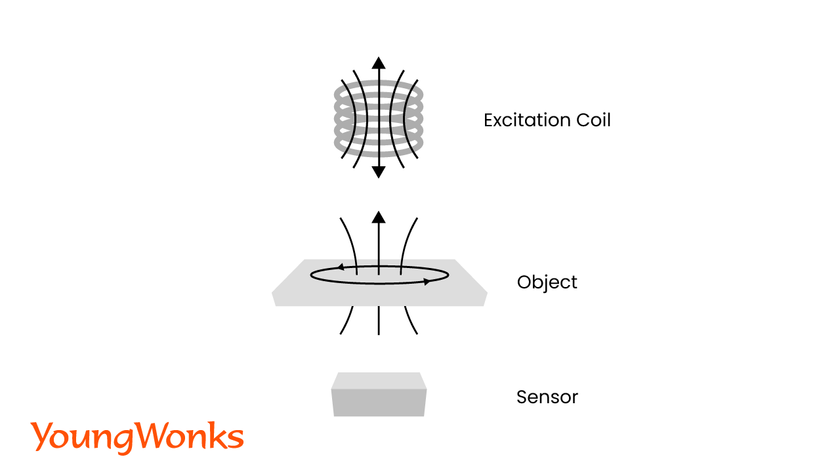
Magneto induction methods, on the other hand, calculate how magnetized a material is or becomes when upon exposure to an external magnetic field. This includes creating demagnetization curves, also called B-H curves or hysteresis curves, which measure the magnetic flux and magnetic force experienced by a material being exposed to a magnetic field.
It is these curves that allow scientists and engineers to classify material making up devices such as batteries and electromagnets as per their magnetic strengths, which is revealed by their response to external magnetic fields.
Magnetometers using magneto-resistance methods:
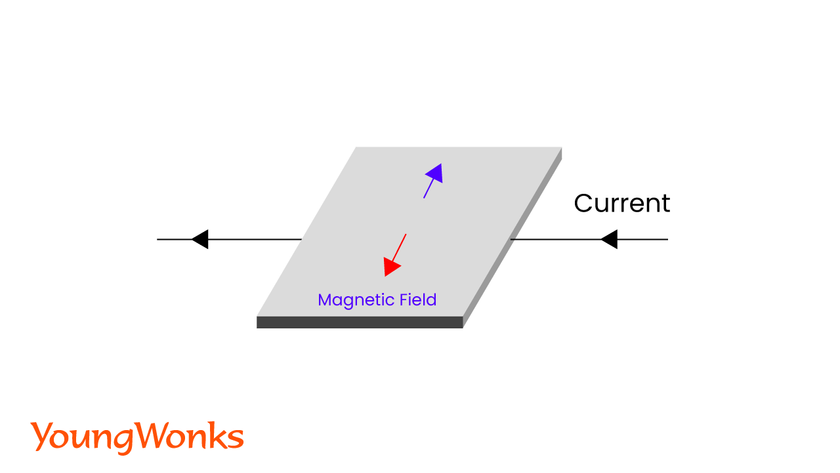
Magneto-resistance methods, meanwhile, detect an object’s capacity to change electrical resistance upon exposure to an external magnetic field. Like magneto induction techniques, magnetometers use the anisotropic magneto-resistance (AMR) of ferromagnets (aka materials that have been subjected to magnetization and continue to have and display magnetic properties even after the magnetization has been removed).
Basically, AMR is about detecting between the direction of electric current and magnetization in the presence of magnetization. Upon being exposed to an external magnetic field, the spins of the electron orbitals making up the material redistribute themselves. The electron spin here is in fact a form of angular momentum. So the electrical resistance is the greatest when the current is parallel to an external magnetic field so that the field can be measured correctly.
Calibration of Magnetometers
The calibration of magnetometers is usually carried out using coils supplied by an electrical current to create a magnetic field. This helps characterize the sensitivity of the magnetometer. In fact, the uniformity of the calibration coil is a key element across several applications; this explains why coils like Helmholtz coils are commonly used in a single axis or a three-axis configuration. Also, in demanding applications a high homogeneity magnetic field is necessary. So magnetic field calibration can also be done using a Maxwell coil, cosine coils, or calibration in the highly homogeneous magnetic field of the earth.
Types of Magnetometers
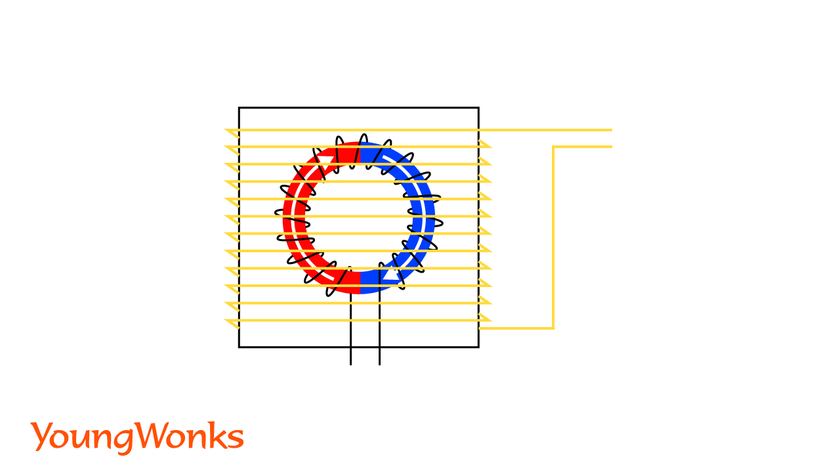
Magnetometers are mainly classified under two categories: scalar and vector manometers. Scalar manometer is used to measure accurately the magnetic flux intensity’s scalar value. These scalar magnetometers can be further differentiated as proton precession, overhauled effect and ionized gas magnetometers. A vector manometer, on the other hand, is used to measure the magnitude and direction of the magnetic field. These can be sorted into types such as rotating coil, Hall Effect, magneto resistive, fluxgate, search coil, SQUID, and SERF magnetometers.
1. Scalar Magnetometers
Proton Precession Magnetometers
This magnetometer measures the resonance frequency of the protons in a magnetic field by using nuclear magnetic resonance (NMR). When a polarizing DC current is sent through a solenoid, it creates high magnetic flux around the hydrogen-rich fuel like kerosene and some of the protons get aligned with this flux. Upon the release of the polarizing flux, the frequency of precession of the protons to normal realignment is used to measure the magnetic field.
Overhauser Effect Magnetometers
Here a low power radio frequency signal is used instead of the solenoid for aligning the protons. So when an electron-rich liquid combines with hydrogen, it is subjected to a radio frequency (RF) signal. With overhauled effect the protons get coupled to nuclei of the liquid. Given how the precession frequency is linear with the magnetic flux density, it can be used to measure the strength of the magnetic field. Moreover, boasting faster sampling rates, these magnetometers need far less power.
Ionized Gas Magnetometers
More accurate than the proton precession magnetometers, ionized gas magnetometers consist of vapor chambers filled with the vapors like cesium, helium, and rubidium, and photon emitter light. When the cesium atom meets the photon of the lamp, energy levels of the electrons fluctuate at a frequency corresponding to the external magnetic field, thus helping measure the intensity of the magnetic field.
2. Vector Magnetometers
Fluxgate Magnetometers
Used for high sensitivity applications, here the fluxgate sensor drive -made up of a magnetically susceptible core wound by two coils of wire - has an alternating drive current running a permeable core material. One coil here has AC current running through it and the constantly changing field induces an electrical current in the second coil. This current change is based on the background field. So, the alternating magnetic field, and the induced output current, are not in sync with the input current and the extent varies as per the strength of the background magnetic field.
Magneto Resistive Magnetometers
These are made up of semiconductor devices where the electrical resistance changes as per the applied or ambient magnetic field.
SQUID Magnetometers
These comprise two superconductors separated by thin insulating layers to form two parallel junctions. Given how sensitive they are to the low range intensity fields, they are most often used to measure the magnetic fields produced by the brain or heart in medical applications.
Search-coil Magnetometers
Based on the principle of Faraday’s laws of induction, these magnetometers comprise copper coils wrapped around a magnetic core. The core gets magnetized by the magnetic field lines produced inside the coils and the fluctuations in the magnetic field bring about the flow of electrical currents. It is the changes in voltage due to this current that are then measured and recorded by the magnetometer.
Rotating Coil Magnetometers
As the coil rotates, the magnetic field induces the sine wave signal in the coil. Given that this signal amplitude is proportional to the strength of the magnetic field, the magnetometer is thus able to measure the latter. However, this method is outdated today.
Uses / Applications of Magnetometers

Magnetometers have several uses today. Let us look at their applications.
Compasses:
Today, magnetometers have been miniaturized to the point where they are easily included in integrated circuits at a low cost and they are thus increasingly being used as miniaturized compasses (MEMS magnetic field sensor).
Geographical surveys:
Magnetometers are widely used for measuring the earth’s magnetic field, especially in geophysical surveys. They are used to find and identify magnetic anomalies of various types, and to ascertain the dipole moment of magnetic materials. Surveyors use them in geophysics applications.
Aircrafts:
They are also used in aircrafts, where they are usually used as a heading reference in the aircraft’s attitude and heading reference system.
Military purposes:
Magnetometers are used in defense and navy to carry out submarine activities and submarine detection as well. In fact, countries such as the United States, Canada and Australia have categorized sensitive magnetometers under military technology, and they thus control their distribution. Defense and aerospace: Magnetometers are also used on land, in the air, at and under sea and in space.
Oil and gas exploration:
Magnetometers are used for drilling discovered wells. They are used in drilling sensors which are used to detect the direction or path for the drilling processes.
Plasma flows:
Magnetometers also come in handy for studying the solar wind and planetary bodies.
Archaeology:
Magnetometers are used to study archaeological sites and detect buried objects.
Metal detection and coal exploration:
Since they can detect magnetic (ferrous) metals, magnetometers make for good metal detectors. Moreover, they can detect them at greater depths when compared to conventional metal detectors. Also, they can detect large objects, such as cars, at tens of metres, while a metal detector doesn’t work well for distances greater than 2 metres. This is why it is common to use them for finding sills and other obstacles that can lead to an explosion.
Pipeline monitoring:
Similarly, magnetometers are also used for inspecting corrosion of pipelines in underground systems and for monitoring them.
Health care monitoring:
Interestingly, magnetometers also have several applications in healthcare. They are particularly useful when it comes to performing cardiac applications, such as diagnostic systems that non-invasively measure heart functions.
Understanding Magnetometers in Technology
Magnetometers are fascinating instruments used to measure magnetic forces, particularly the Earth's magnetic field. They play a crucial role in various technological applications, from navigation systems in smartphones to geological exploration tools. At YoungWonks, we are dedicated to unraveling the mysteries of technology for young minds. By enrolling in our Coding Classes for Kids, students can begin their journey into the world of science and innovation. Those with a keen interest in programming can further their knowledge with our Python Coding Classes for Kids, designed to provide a strong foundation in coding principles. Additionally, for enthusiasts eager to explore the integration of hardware with software, our Raspberry Pi, Arduino and Game Development Coding Classes offer a unique opportunity to engage in hands-on projects involving real-world applications of magnetometers and other sensors.
*Contributors: Written by: Vidya Prabhu / Lead image by: Leonel Cruz
